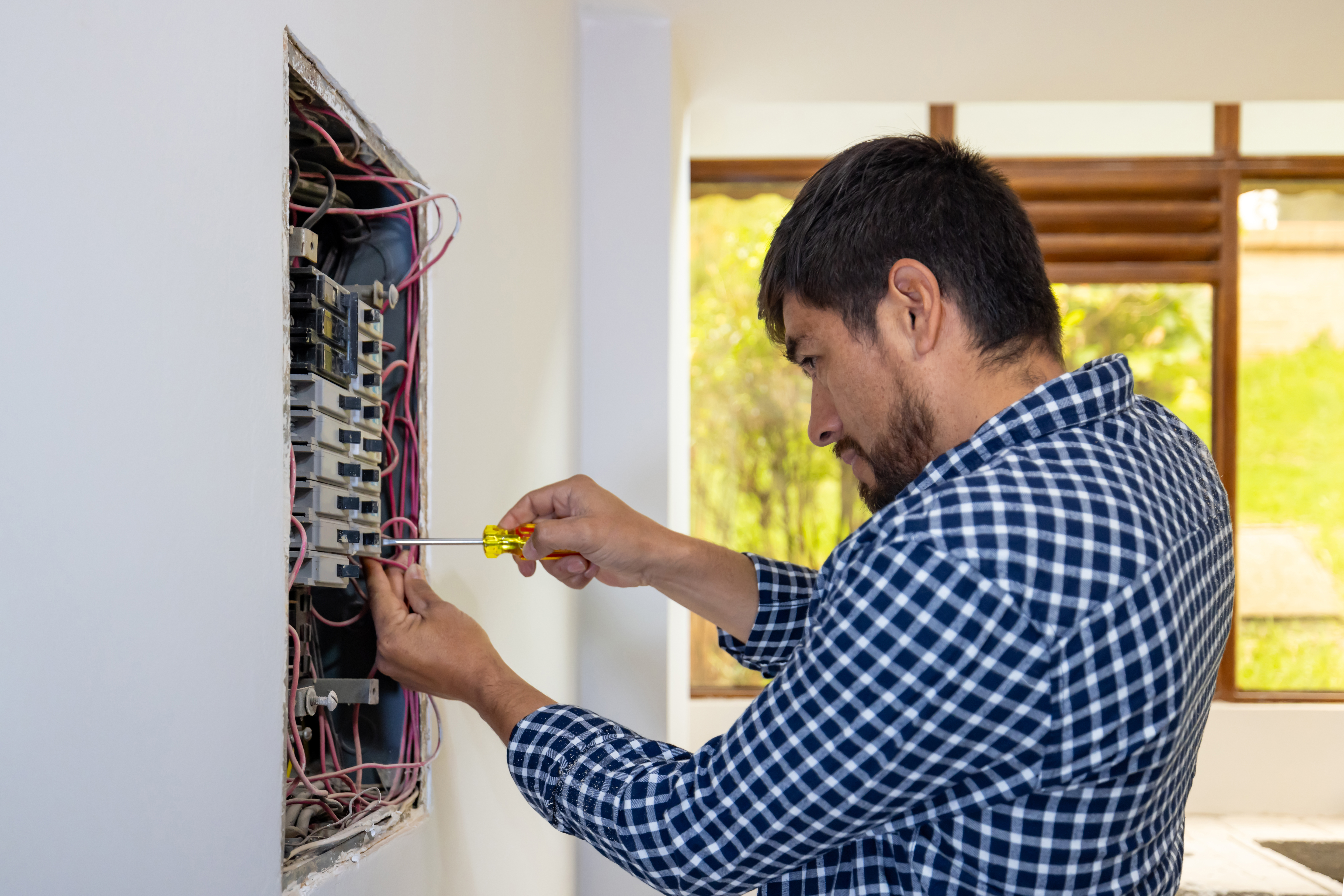
How much does it cost to add an electrical outlet in Dallas? Learn average prices, permit requirements, and factors that influence costs in the Dallas area.
Take your EV charging to the next level with a 240-volt outlet


This project requires a lot of experience, so we don’t recommend DIYing it. Hire a pro with the special skills and tools necessary to complete the job safely.
Installing a 240-volt outlet for your electric car is an excellent investment because it significantly reduces EV charging times compared to a conventional 120-volt outlet. Known as a Level 2 charger, this upgrade allows you to fully recharge your vehicle overnight or in a few hours. Plus, it improves charging efficiency and lets you take advantage of lower electricity rates during off-peak hours. This guide will walk you through the installation process, from selecting the right location to ensuring a safe and efficient setup.
Most municipalities require an electrical building permit to install a new outlet. Before you start this project, consult your local permit office to confirm requirements and obtain any necessary documentation. If you hire a licensed electrician, they will handle this process on your behalf.
When planning your electric car charger installation, it’s best to install the outlet in the garage where you park your EV, rather than the driveway, as it will shield the outlet from the elements and prolong its lifespan. Ensure it’s within reach of your charging cable and mounted at a convenient height (typically 18 to 48 inches from the ground). Always check local electrical codes to ensure you comply with any placement regulations.
Before you start, shut off the main power supply at the breaker to prevent the risk of electrocution while you or your electrician work. Use a voltage tester on an existing outlet to verify that the power is completely off before proceeding to the next step.
Next, plan the wiring route from the panel to the installation site, ensuring a clear and accessible path. Always use the appropriate wire gauge for the amperage of your EV charger. You’ll also need to determine whether you need to upgrade your electrical panel for your EV charger, which is only necessary if you have 100-amp service. If you’re not sure, calculate your home’s electrical load to ensure your current service can accommodate your EV charger.
Open the breaker panel and install a dedicated double-pole circuit breaker that matches the amperage of your charger (usually around 50 amps). Connect the wires to the breaker following the manufacturer’s instructions, ensuring everything is connected properly for safety.
Run the wire from the panel to the outlet location through conduit. Connect the wires by color to the 240-volt outlet terminals: Hot (black and red), neutral (white), and ground (green or bare copper). Secure all connections tightly.
Secure the outlet box to the wall with appropriate mounting hardware. Restore power at the breaker panel and use a voltage tester to confirm the correct voltage before plugging in your EV charger.

This electrical task is complicated and should be completed by a local electrician. However, if you choose to install a 240-volt outlet yourself, be sure to avoid these mistakes:
Attempting an installation without proper expertise: This installation should only be attempted with proper electrical knowledge, as there is high risk of electrical shock or fires from improper installation.
Using the wrong wire gauge: Undersized wiring can overheat and pose safety risks.
Skipping over local code requirements: Improper installation that doesn’t strictly follow code regulations may lead to inspection failures or safety hazards in the future.
Overloading the circuit: Ensure your breaker and wiring can handle the EV charger’s power requirements.
If you’re not trained to perform electrical work, hiring a licensed local electrician is necessary for this project, and may even be required by law to receive the proper permitting. The cost of hiring an electrician averages between $200 and $300, so it’s well worth the extra spending to avoid the risk of electrical shock and fire hazards in the future. When in doubt, always hire out.
From average costs to expert advice, get all the answers you need to get your job done.

How much does it cost to add an electrical outlet in Dallas? Learn average prices, permit requirements, and factors that influence costs in the Dallas area.

Installing a new electrical box in Dallas is a significant home renovation that requires a licensed electrician. Here’s what to expect about the cost of a replacement.

Wondering how much rewiring a house costs in Dallas? Learn average prices, material costs, and key factors that affect your budget.

Having dependable electricity is more than just a convenience—it’s a necessity. Here’s when to hire an electrician to keep your home up and running, safely.

If you want the convenience and peace of mind they bring, learn how to install smart light switches to control your home’s illumination from any location.

Flickering lights and breaker trips can be a sign that it’s time to replace a circuit breaker. Find out the cost, safety tips, and how to replace a circuit breaker.